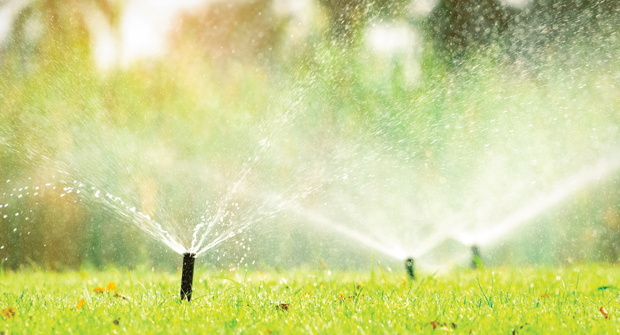A solid irrigation shutdown strategy prepares your client’s irrigation systems for a long winter’s nap and alleviates worries about costly repairs when the system is removed from hibernation in the spring. Here are tips on scheduling appointments, winterization, and essential equipment to ensure a smooth startup in the spring.
Connect with clients
Reaching out to clients and scheduling fall winterization appointments may be the most important component of the irrigation shutdown process.
Irrigation pros suggest getting a jump on this process in August to begin filling up the September calendar with appointments and establishing routes, all with the goal of being done by Thanksgiving.
“Without a doubt, it’s a very busy time for us because it’s a race to the freeze,” says JC Wheaton, president of Centerville Landscape & Irrigation in Dayton, Ohio. The full-service landscape company’s service portfolio includes 40 percent irrigation work.
Schedule “snowbirds” first before they leave town for the winter. Often, they can schedule appointments early, giving your techs a jump on the shutdown season, says Brian Danielson, co-owner of B&B Sustainable Landscape & Irrigation, based in Pompton Plains, N.J.
Make every customer aware of the day your irrigation crew will be on their property. Keep the time frame to a.m. or p.m. rather than a specific arrival time because some system shutdowns may take longer.
“This is key because we need access to the water shut-off, which may be in the yard or the client’s basement,” Danielson says. “And we’ll also have to access the control box, which is outside often, but it could also be in the garage or even in the house.”
The final step before deploying technicians is to arm them with client notes about their systems. This is vital to assessing any important details about their irrigation system or the client’s property — for example, there’s a friendly dog in the backyard, so make sure the gate stays closed. Older systems may also need special attention during winter shutdown.
Step by step
Once on-site and the point of connection is turned off, irrigation pros should double-check that the water supply is, in fact, turned off.
“This is an important point that I’ve learned the hard way,” Wheaton says. “Sometimes the meters in the ground develop small leaks as the angle valves go bad. So, you want to remove the meter to make sure the angle valve is actually shut off all the way. If you don’t when you winterize, it’s going to leak water slowly back into the system and either break the piping of your backflow.”
Next, choose the activation cycle on the controller and turn on each zone manually, cycling water through the system until no more water is coming out of the heads.
“If you’re blowing mist, that ensures you’ve evacuated the water out, and nothing will expand and freeze (during the winter),” Wheaton says.
Danielson says that thoroughness and attention to detail are keys.
“If you miss something now, it’ll come back to bite you in four or five months when you turn that system back on,” he says. “The time and attention you put in now means fewer issues in the spring.”
The blow out
A common misconception is that compressor size is not a factor when pushing air into an irrigation system during winter shutdown. Wheaton says adding this process can take between 15 and 45 minutes, depending on the size of the irrigation system.
“A pancake compressor isn’t going to do it,” he says. “You need a volume of air to (blow out) a system correctly. We’ve had clients who thought they could do it themselves with a compressor they purchased from (a big box store). To do it the right way, you need a volume of air, and we use 100- and 185 (cubic feet per minute) tow-behind compressors so that volume is sustained throughout the entire (irrigation) system.”
Address the issues
The final step is for techs to note any issues encountered during a shutdown, any damages (broken heads, inactive zones) that need to be repaired in the spring, or any critical work that needs to be done immediately. All notes should also be provided to the client.
“Unless it’s a critical issue, most repairs can wait until the spring,” Danielson says. “So, we make notes in the file, address any issues with the client, and give them a rough estimate of the costs come spring.”


